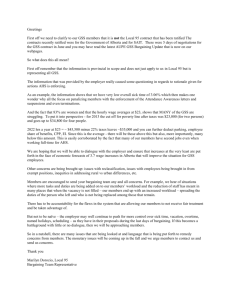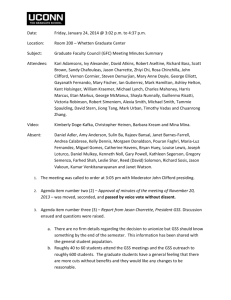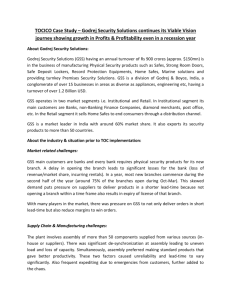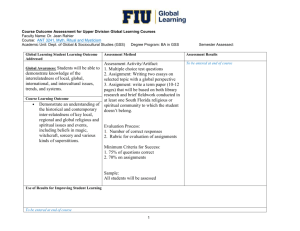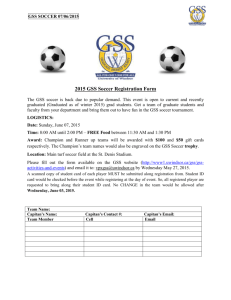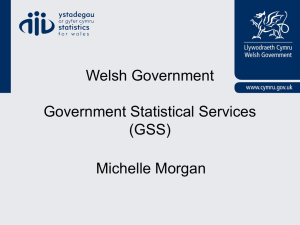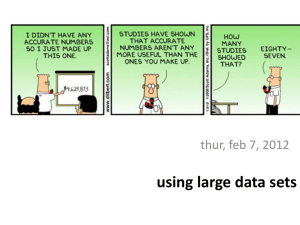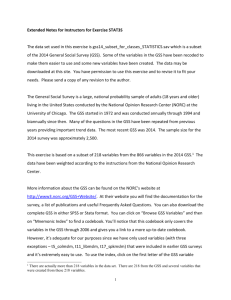The Dynamic Effects of Group Support Systems on Group Meetings
advertisement
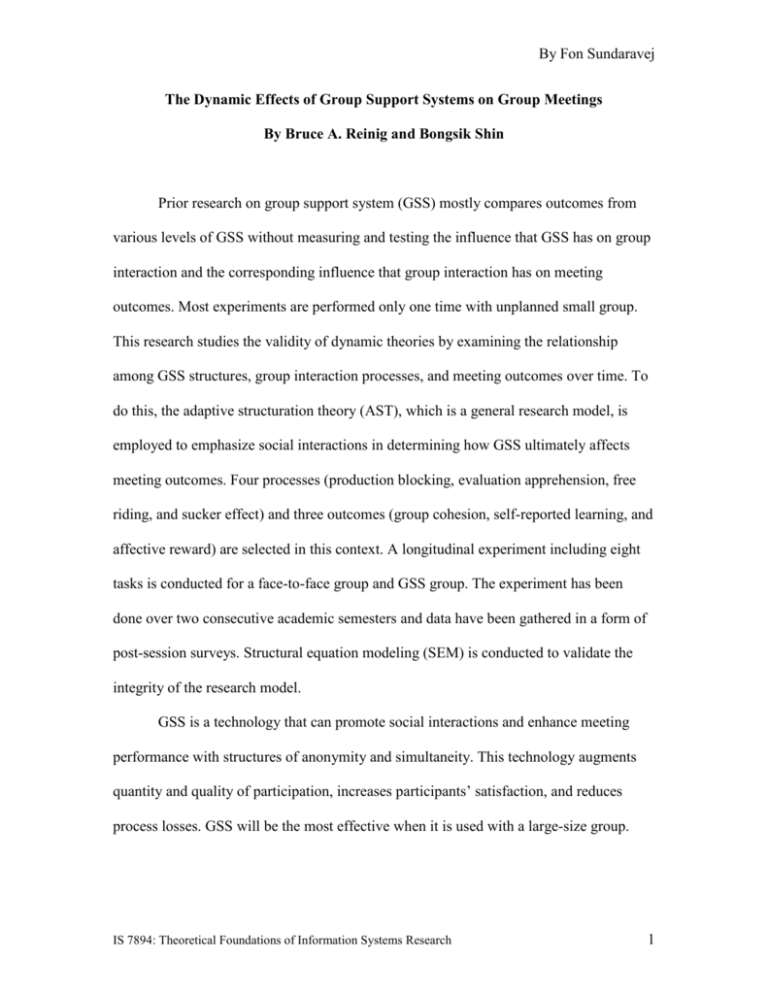
By Fon Sundaravej The Dynamic Effects of Group Support Systems on Group Meetings By Bruce A. Reinig and Bongsik Shin Prior research on group support system (GSS) mostly compares outcomes from various levels of GSS without measuring and testing the influence that GSS has on group interaction and the corresponding influence that group interaction has on meeting outcomes. Most experiments are performed only one time with unplanned small group. This research studies the validity of dynamic theories by examining the relationship among GSS structures, group interaction processes, and meeting outcomes over time. To do this, the adaptive structuration theory (AST), which is a general research model, is employed to emphasize social interactions in determining how GSS ultimately affects meeting outcomes. Four processes (production blocking, evaluation apprehension, free riding, and sucker effect) and three outcomes (group cohesion, self-reported learning, and affective reward) are selected in this context. A longitudinal experiment including eight tasks is conducted for a face-to-face group and GSS group. The experiment has been done over two consecutive academic semesters and data have been gathered in a form of post-session surveys. Structural equation modeling (SEM) is conducted to validate the integrity of the research model. GSS is a technology that can promote social interactions and enhance meeting performance with structures of anonymity and simultaneity. This technology augments quantity and quality of participation, increases participants’ satisfaction, and reduces process losses. GSS will be the most effective when it is used with a large-size group. IS 7894: Theoretical Foundations of Information Systems Research 1 By Fon Sundaravej The social information processing (SIP) proposes that interpersonal notion will take longer to develop in groups without any history and that personalized communication takes longer to display in computer-mediated communication (CMC) groups than it does in face-to-face groups. Hence, time is expected to have an impact on both group interaction and meeting outcomes. To examine the relationship between GSS structures and social interaction, four process constructs are identified. Production blocking refers to the loss of ideas or failure to generate or remember new ideas while waiting for a turn to speak during a meeting. GSS reduces production blocking through the structure of group memory and simultaneity. Evaluation apprehension is the fear of being negatively evaluated by other group members and precludes participants from presenting their ideas to a group. GSS decreases evaluation apprehension through the structure of anonymity. Free riding occurs when individuals choose to diminish effort in a group setting resulted from social comparison to match the level of other members. GSS lowers free riding through the structure of simultaneity. The sucker effect happens when hardworking members feel their efforts are being taken advantage of by other members. GSS lessens the sucker effect through the structure of anonymity. Based on the preceding relationship, it is believed that participants in GSS meetings will report less production blocking, evaluation apprehension, free riding, and sucker effect than participants in face-to-face meetings. To examine the relationship between social interactions and meeting outcomes, three outcome constructs are identified as group cohesion, self-reported learning, and affective reward. Group cohesion represents the degree of mutual cooperation, IS 7894: Theoretical Foundations of Information Systems Research 2 By Fon Sundaravej confidence, and trust that exists among group participants. It is presumed that production blocking, evaluation apprehension, free riding, and sucker effect are negative predictors of group cohesion. Previous findings illustrate that active involvement is crucial to members in order to become creative, critical, and productive learners. Therefore, it is conjectured that group cohesion is a positive predictor of self-reported learning; and production blocking, evaluation apprehension, free riding, and sucker effect are negative predictors of selfreported learning. Some theories suggest a relationship between group interaction and satisfaction. Thus, it is supposed that group cohesion is a positive predictor of affective reward. Production block, evaluation apprehension, free riding, and sucker effect are negative predictors of affective reward. Self-reported learning may also be viewed as an intermediate variable that may influence affective reward. Self-reported learning, therefore, tends to be a positive predictor of affective reward. AST and SIP theories propose that group dynamics and outcomes change over time. In AST theory, changes in group dynamic and outcomes are neither positive nor negative. In SIP theory, it is stated that outcomes can be realized as interpersonal development that can occur over multiple time periods. Basically, both social dynamic and meeting outcomes are procedural in nature and subject to change over time. Consequently, time will be expected to have a significant impact on group dynamic and meeting outcomes. IS 7894: Theoretical Foundations of Information Systems Research 3 By Fon Sundaravej A longitudinal experiment is conducted using two classes held in consecutive semesters. One semester is face-to-face group and the other semester is GSS group. Students from both classes debate eight ethical scenarios. Survey is conducted by the students after each topic discussion. Items on the survey are tested with exploratory factor analysis using Equamax rotation. All constructs except evaluation apprehension achieve high validity. One affective reward item also shows low reliability. These items are subsequently excluded from further analysis. SEM is later used to analyze and test the hypotheses. Overall, it is concluded that the model is suitable and valid. The result of the experiment is that GSS reduces every process construct, except evaluation apprehension which is not adequately measured and subsequently discarded. That is, GSS is still a tool to support group and meeting interaction. Only the sucker effect is significant in reducing group cohesion. Group cohesion is a positive predictor of self-reported learning. Free riding is a negative predictor of self-reported learning. Both findings support the cooperative learning theory that students learn through working in groups and playing an active role in the learning process. The sucker effect turns out to be a positive predictor of self-reported learning. In order for students to benefit from other students, they have to be engaged in the learning process and such engagement leads to self-reported learning. Free riding has a negative impact on affective reward, while group cohesion and self-reported learning positively influence affective reward. Time period is a negative predictor of self-reported learning and affective reward, but a positive predictor of the sucker effect. In summary, SEM supports the procedural methodology to examine effects of group interaction of GSS on process losses and the corresponding effect those process losses have on meeting outcomes. IS 7894: Theoretical Foundations of Information Systems Research 4
